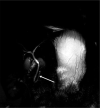Dorsal pancreatic agenesis: a case report
- PMID: 37363558
- PMCID: PMC10289771
- DOI: 10.1097/MS9.0000000000000136
Dorsal pancreatic agenesis: a case report
Abstract
The pancreas develops from a small ventral bud and a larger dorsal bud. During the rotation of the foregut, the ventral pancreas rotates toward the dorsal pancreas and joins together to form a complete pancreas with ducts. Among the various developmental congenital anomalies, dorsal pancreatic agenesis is one of the rare entities, with less than a hundred cases reported so far. It involves the absence of the dorsal bud derivatives (head, body, and tail).
Case presentation: Herein, we present a case of a 50-year-old woman who presented to general outpatient department with a complaint of abdominal pain. The patient was diagnosed with cholelithiasis with a contrast-enhanced computed tomography finding of dorsal pancreatic agenesis on a detailed workup. However, the patient did not have any other associated anomalies or symptoms associated with dorsal pancreatic agenesis. The patient was managed for cholelithiasis with laparoscopic cholecystectomy.
Clinical discussion: Failure in development due to aberrant embryogenesis may cause partial or complete agenesis of the dorsal pancreas. The minor papilla, the accessory pancreatic duct, the body, and the tail of the pancreas are not present in the case of complete dorsal agenesis. Most cases of dorsal pancreatic agenesis are asymptomatic and diagnosed incidentally, whereas some of the cases may present with other associated abnormalities. It is almost always diagnosed via imaging modalities.
Conclusion: Dorsal pancreatic agenesis is a very rare congenital anomaly of the pancreas. It can be diagnosed via various imaging modalities and almost always remains a radiological diagnosis with incidental findings.
Keywords: agenesis; contrast-enhanced computed tomography; pancreas.
Copyright © 2023 The Author(s). Published by Wolters Kluwer Health, Inc.
Conflict of interest statement
There are no conflicts of interest.
Figures



References
-
- Ehrhardt JD, Gomez F, Embryology, Pancreas. StatPearls. StatPearls Publishing; 2022. - PubMed
-
- Borghei P, Sokhandon F, Shirkhoda A, et al. . Anomalies, anatomic variants, and sources of diagnostic pitfalls in pancreatic imaging. Radiology 2013;266:28–36. - PubMed
-
- Pan FC, Wright C. Pancreas organogenesis: from bud to plexus to gland. Dev Dyn 2011;240:530–565. - PubMed
-
- Mohapatra M, Mishra S, Dalai PC, et al. . Imaging findings in agenesis of the dorsal pancreas. Report of three cases. JOP 2012;13:108–114. - PubMed
LinkOut - more resources
Full Text Sources
